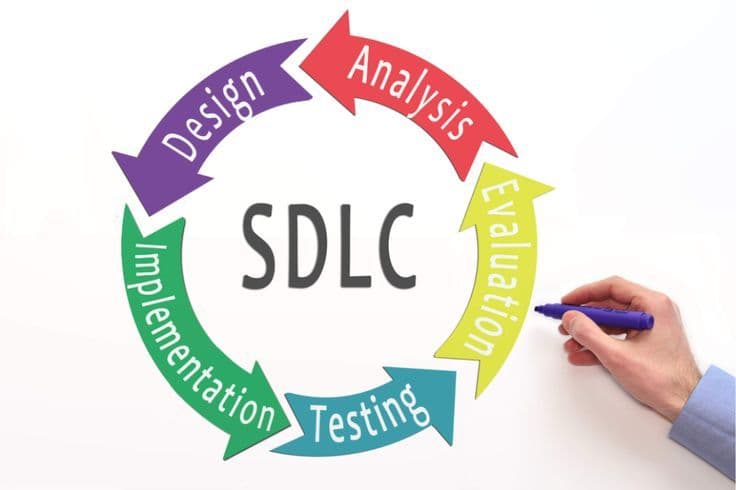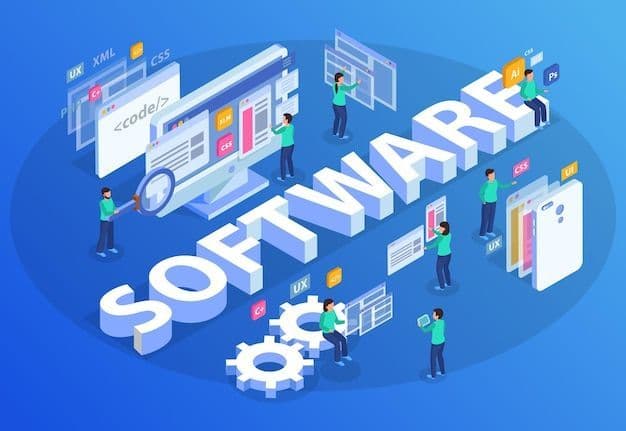In this digital era, software has become an integral part of our daily lives. From the apps we use on our phones, to systems within companies, to the technology that supports public services, all of these are the result of the software development process.
However, for many people new to the world of technology, the term “software development” may still sound complicated. What exactly is software development? Why is it so important? And how can someone begin a career in this field?
This article will provide a comprehensive and step-by-step overview of the fundamentals of software development, the fascinating areas within it, and an 8-step guide to building software, from the initial idea to a fully functional digital product.
What is Software Development?
Software is a collection of instructions or programs that direct a computer to perform specific tasks. Unlike hardware, software is flexible and allows computers to perform various functions that can be programmed according to needs.
The primary goal of software development is to create digital solutions that address user needs while supporting the achievement of business objectives efficiently, consistently, and securely. This process is carried out by developers, programmers, and software engineers through a systematic series of stages known as the Software Development Life Cycle (SDLC).
Some important terms in the world of software development include:
- Frontend: The part of the software that interacts directly with users, such as the interface on a website or application.
- Backend: The part that manages logic, databases, and servers behind the scenes.
- Full-stack: Developers who are proficient in both frontend and backend.
- Coding/Programming: The process of writing instructions in a programming language such as JavaScript, Python, or Java.
Understanding these basic concepts is an important first step for anyone looking to enter the world of software development.
After understanding what software development is, it is also important to realize why software development plays such an important role in this digital era.
Why is Software Development Important in the Digital Era?
As technology advances, almost every aspect of human life is now connected to software. Software helps individuals, organizations, and governments to work more efficiently, quickly, and in an organized manner.
Here are some reasons why software development has become so important:
- Business: Software enables companies to manage operations automatically, reach a wider customer base, and analyze data for better decision-making.
- Education: Online learning platforms, practice question apps, and school management systems all rely on software.
- Healthcare: From electronic health records to online doctor consultation apps, software plays a vital role in improving healthcare services.
- Government: The digitization of public services such as tax payments, document processing, and online reporting makes bureaucratic processes faster and more transparent.
Given its significant role, you may be wondering: how exactly is software created from scratch? In this section, we will discuss the eight general steps involved in software development, from the initial idea to the final product.

"The best way to predict the future is to invent it."
8 Steps in Software Development from Idea to Finished Product
Every piece of software we use, from chat apps to digital cash register systems starts with an idea. However, turning an idea into software that is truly usable is not an instant process. There are stages that must be gone through so that the result is not only functional, but also useful, secure, and sustainable.
Here are eight general steps in the software development process, from scratch to ready for use by users:
1. Defining Requirements (Requirement Gathering)
The first step is to clearly identify the problem to be solved and who the users are. The team will gather information, whether from potential users, clients, or internal research.
For example, if developing a cash register app for SMEs: Do users want daily sales reports? Will the app run on a phone or computer?
This information will form the basis for the development direction.
2. Research and Validate the Idea
Before starting to design or write code, it is important to ensure that the idea is truly needed. Some key questions:
Are there similar solutions already available in the market?
What advantages can we offer?
Is the idea realistic to develop?
This stage will prevent the team from building software that is useless or has no market value.
3. System and Interface Design (UI/UX) Once you know what you want to build, it's time to visualize its form. Design is divided into two parts: System design: workflow, data structure, how components are connected to each other. User interface design (UI/UX): visual appearance and ease of use. Good design will make the development process easier and users more satisfied.
4. Determining Technology (Tech Stack) The choice of technology greatly affects the speed and quality of development. The team will choose: Programming language, Framework used, Database, Collaboration and deployment tools
5. Start Development (Development) At this stage, developers begin writing code based on the agreed-upon design. Development can be done in stages, starting with core features and then moving on to supporting features. This process involves: Coding, Integration between components, and Documentation
6. Testing Every completed feature must be tested, not only by developers, but also by the QA (Quality Assurance) team or even potential users. The goal is to ensure that the software: Does not have serious bugs, Is easy to use, Is secure and stable
7. Launch (Deployment) Once all testing is complete and the software is deemed ready, the product can be launched on a server or app store, depending on the type. Deployment can be done internally (beta testing) or directly to the public with a promotional strategy.
8. Maintenance & Updates Software is not a one-time product. After launch, there will inevitably be a need to: Fix bugs found by users, Add new features, Adapt to the latest technology. This stage is important to keep the software relevant and evolving with the needs of its users.
Now you know the whole process. But everyone has different interests, and the world of software development is vast. So, the question is: which area are you interested in?
Interesting Fields in the World of Software Development
Software development is not a narrow field. On the contrary, it is a vast and ever-evolving world. Here are some popular fields that anyone interested in pursuing a career in this field can explore:
Web Development Creating and managing websites. Divided into: Frontend: the user interface Backend: server logic, databases, authentication, etc. (e.g., Node.js, Laravel, Django)
Mobile App Development Focuses on creating applications for mobile devices such as Android and iOS. Commonly used programming languages include Kotlin, Swift, and Flutter.
Game Development Combines visual, audio, and interactive elements to create a gaming experience. Typically uses engines like Unity or Unreal Engine.
Artificial Intelligence & Machine Learning A field that enables computers to “learn” from data and make decisions. AI is used in various applications, from chatbots to recommendation systems.
Cybersecurity Protecting systems from threats, attacks, and data breaches. This field is crucial in the digital age and continues to experience significant growth.
Now you know the whole process. But everyone has different interests, and the world of software development is vast. So, the question is: which area are you interested in?
How to Start a Career in Software Development?
For many people, starting a career in software development may seem challenging, especially if they don't have an educational background in technology. However, the reality is that many successful developers started from scratch, self-taught and gradually. Here are some steps you can take to get started in the world of software development:
a. Learn the Basics of Programming Languages Start with languages that are widely used and easy for beginners to understand, such as:
- HTML & CSS for creating web pages
- JavaScript for adding interactivity
- Python for logic and automation
You don't need to master everything at once. Focus on one thing first, then develop it gradually.
b. Use Online Learning Platforms There are many free and paid learning resources available. Some of the most popular ones include:
These platforms provide structured materials, practice projects, and certificates if needed.
c. Build Your Portfolio Through Mini Projects The best way to learn is through practice. Try creating small projects such as:
- Personal website or online resume
- Simple calculator
- To-do list app
- Cloning a simple website (e.g., Instagram interface)
These projects can be showcased as a portfolio to demonstrate your skills to potential employers.
d. Join Communities & Open-Source Projects Join developer communities like forums, Telegram groups, Discord, or local meetups. You can learn from others' experiences and even contribute to real projects.
e. Consistency is Key Learning to code is like learning a new language, it requires regular practice and patience. Set a daily study time, create weekly goals, and don't be afraid to fail. Every error is an opportunity to learn more.
The world of software development is not only vast and dynamic, but also full of opportunities for those who are ready to learn and grow. Whether you are interested in becoming a web developer, game developer, or interested in AI, everything can be learned with consistency and a spirit of exploration. Technology continues to evolve, and people who can create technology will always be in demand.
Let's take your first step today.
Find a topic that interests you, start learning from free platforms, and build a small project. You don't need to be an expert to get started, you just need to start in order to become an expert.



